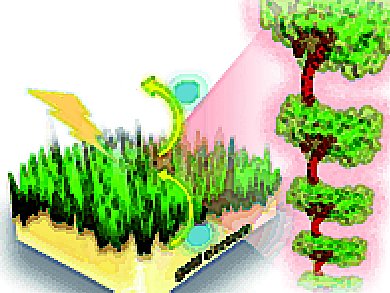The conversion of carbohydrates and sugar alcohols to platform chemicals is the topic of a Review by R. Palkovits et al.: How can hydrogenolysis bridge current technology and future biorefinery concepts? In his Minireview, M. Braun explains why the diaryl(oxy)methyl group is anything but an innocent bystander in chiral auxiliaries, catalysts, and dopants. The Highlights deal with tying a trefoil knot by a metal template strategy (C. Romuald and F. Coutrot) and the deposition of colloidal nanoparticles by controlled evaporation (R. G. Larson). Chemistry Nobel laureate H. Michel argues in an Editorial why the production and use of biofuels are inefficient, and why efforts should be focused on combinations of photovoltaics, batteries, and electric engines instead.
In the Communications section, H.-P. Steinrück et al. report how to monitor organic reactions in ionic liquids by means of photoelectron spectroscopy. T. Hayashi et al. present a protein-modified, hierarchically structured gold electrode (see picture) that generates a much higher photocurrent than a single-layer electrode. A. K. Sinha et al. developed a waste-free strategy for the tandem synthesis of stilbenoids. B. R. Cho et al. succeeded in measuring the pH value of human tissue by using two-photon microscopy.



